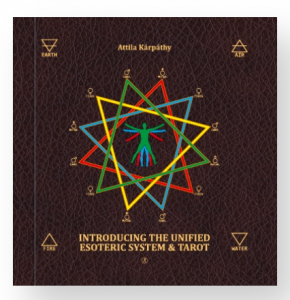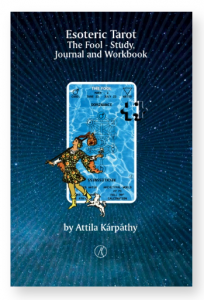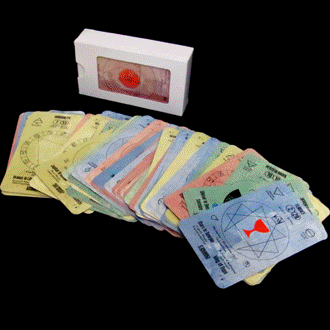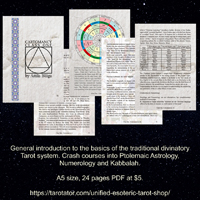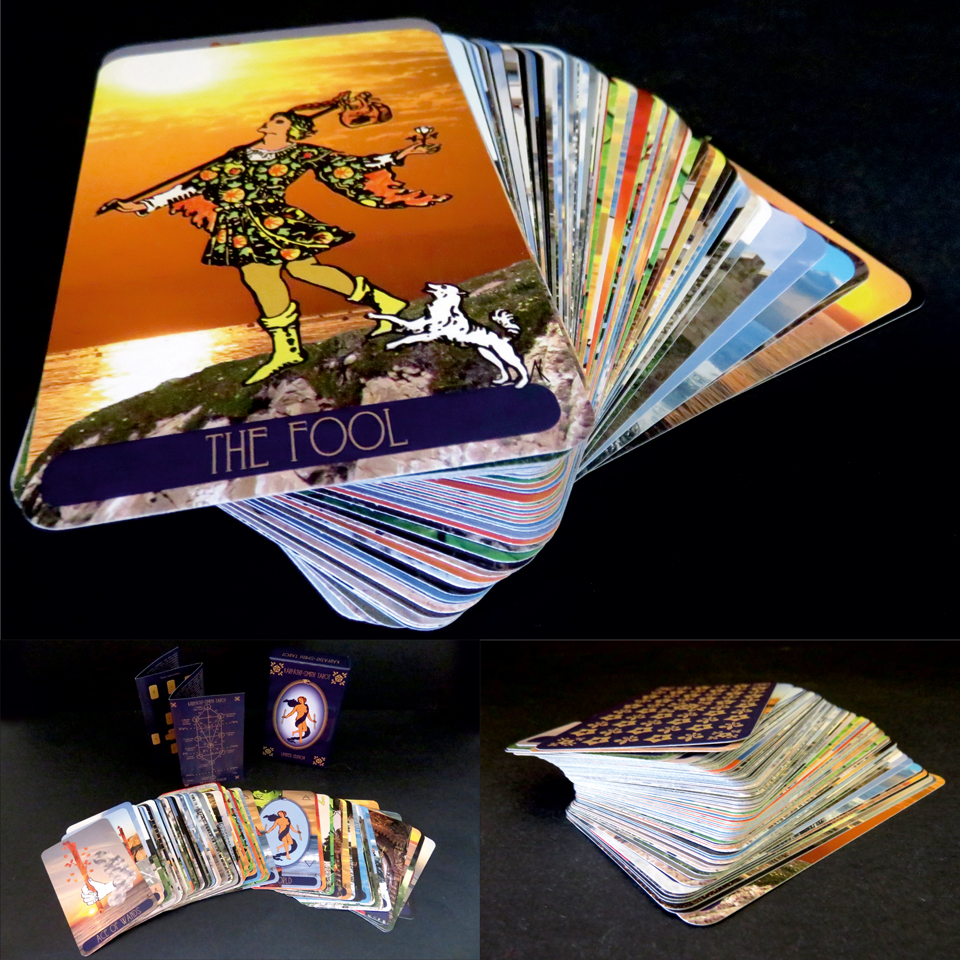
The Rider-Waite Tarot deck was published 111 years ago around this time of the year.
The name of the artist who has drawn the cards, Pamela Colman-Smith, was not even mentioned. Only in recent years, scholars may add the Smith to the name of the deck, in the spirit of the newfound politically correctness.
The Karpathy-Smith deck is a reimagining of the original Rider-Waite Tarot using mixed media techniques, and it is a homage to the genius of Pixie and her astonishing work.
To be honest, I am very disappointed with the colour schemes of the Rider-Waite decks printed lately in China. They all look gloomy and muddy (- sure, except for alternative versions such as ‘Radiant’ and so on.) So, I wanted to ‘breathe new life’ into these cards, preserving Pamela’s original drawings but also by adding a new dimension to them. It is just another proof that each deck and every single card has its life on its own.
The correlation and interpretation of the numbering of the Tarot cards are one of the advanced reading methods. While one of the most popular systems is based on the pattern of Tarot of Marseille, there are several alternative methods in the world of esoteric Tarot.
A while ago, I came up with an alternative system of numbering of the Major Arcana cards, and in the heat of the moment, I renumbered my Rider-Waite deck with a permanent marker. It was an edition, printed in the ’80s in Belgium, beautiful colours and thick, extraordinary card stock and finishing. However, after some time, I realised that the new numbering was not exactly an improvement and started regretting my deed. Unfortunately, the quality of these newly printed decks can compete with the ‘old’ ones.
Meanwhile, I have concluded that several different ways of the numbering of the cards are not only possible, but it is correct.
On the other hand, I discovered the Jungian Tarot by Robert Wang. One of the deck’s most remarkable innovations is the complete lack of captions: no names, no numbering. One can use the deck according to any system she or he prefers. After some consideration, especially thinking of the beginners, I have decided to keep the cards’ names but left off their numbering. However, the printed mini-booklet contains the ‘secret’ esoteric numbering according to the 32 paths of Wisdom.
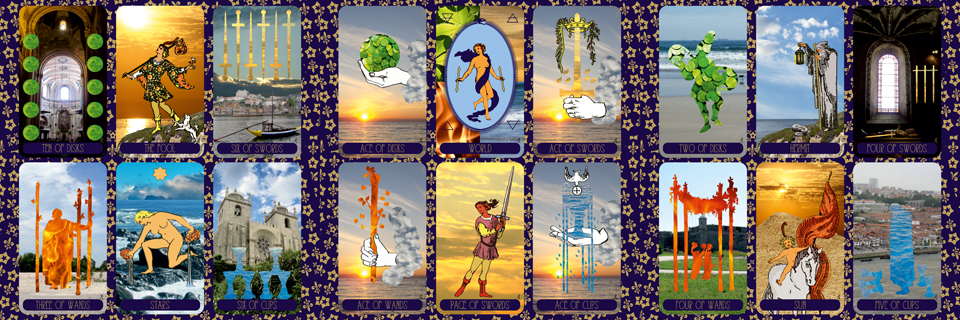
The Kárpáthy-Smith Tarot has born as the result of a string of events.
Joan Marie from the Cult of Tarot website initiated a collective Tarot deck, which eventually materialized into the Button Soup Tarot (https://tarotator.com/button-soup-tarot/). Thirty-nine artists, including Jessica Leigh Henry, Shilo Lewis, Pamela Steele, Itinerant Bizzarium, Julianne Victoria, Gaby Merman, Benebell Wen, Kristine Gorman, Julianne Victoria, AstralPasta, Victoria Lynn Ferrell and myself, submitted a different amount of works for the project. I was the first to finish a card, The Magician, and then I also created the four Fives. Just for the record, about one year earlier, someone proposed a similar collaborative project. Back then, I have made the Five of Cups, but that project never materialised.
When the Button Soup was published, I have received much positive feedback on my work, and fellow artist Shilo Lewis said she would love to see a complete deck in my contribution style. Back then I was somewhat sceptical, but later I reconsidered as I started writing a dystopia, Tarot based esoteric novel which required a Tarot deck as illustration and, not at least, due to the pandemic the whole circumstances of our lives have dramatically changed.
One idea that I have borrowed from the Button Soup Tarot deck is dropping the the’s from the caption of the Major Arcana cards, except for The Fool.
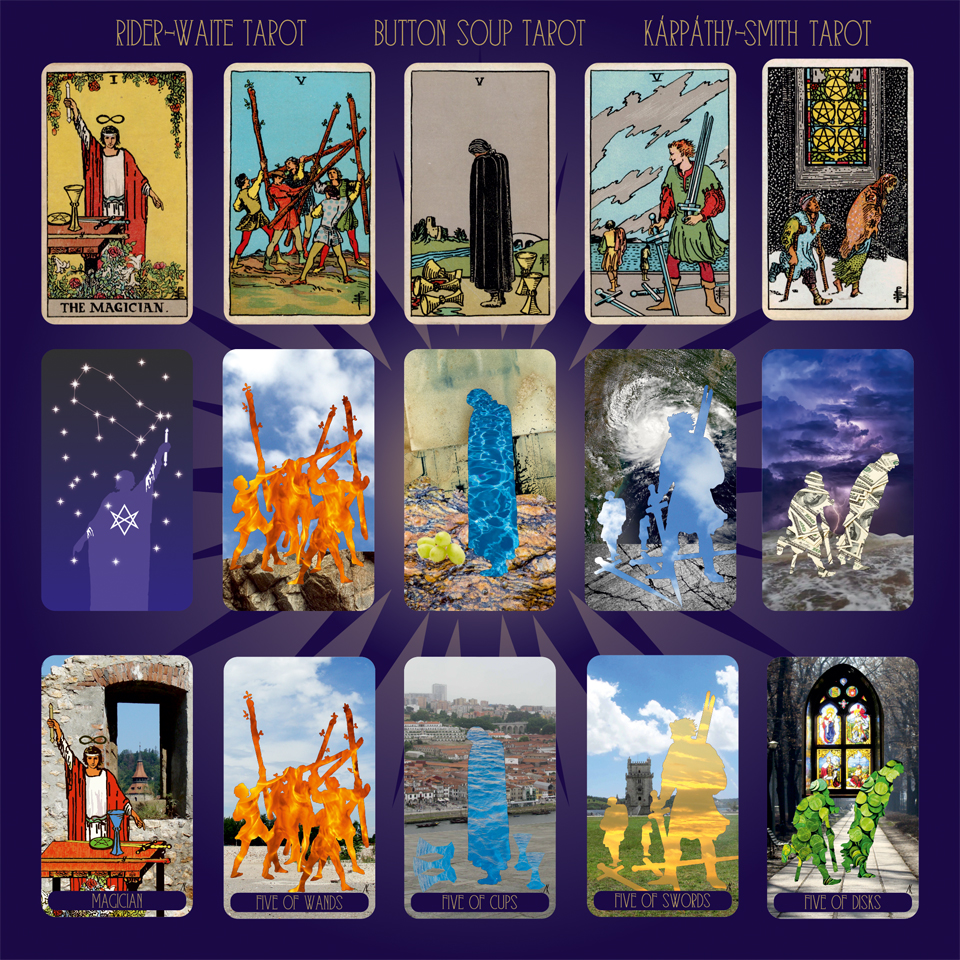
780 copies only limited edition.
78+2 cards; 310 gsm, casino quality card stock with black core, linen finish.
8-sided, numbered, personalized with your name (or the name of the person you chose), accordion printed mini-booklet including instructions for 2 spreads, upright and reversed interpretation for all the 78 cards and the scheme for the 32 paths of Wisdom.
Two packing options, rigid box or velvet bag.
GET YOUR COPY EXCLUSIVELY FROM https://tarotator.com/unified-esoteric-tarot-shop/
The RWS abbreviation
The R stands for Rider, a publishing imprint of Ebury Publishing, a Penguin Random House division. The division was started by William Rider & Son in 1908. One of their first and most popular titles was the Rider-Waite Tarot deck and its companion book, The Key To The Tarot. The deck of cards was initially published in November 1909, simply called Tarot deck. The companion book, written by Waite and called The Key to the Tarot followed next year. The guide book was expand-ed and re-published as the Pictorial Key to the Tarot in 1911. Penguin, plan to celebrate one hundred-ten year since the first publishing, with a re-edition of Waite’s book on 8 of June 2020.
Commonly known as the Original Rider-Waite Tarot, is one of the most popular Tarot deck in use for divination across the world.
The W stands for Waite, Arthur Edward Waite.
According to the Dictionary of Gnosis and Western Esotericism, Waite was born in 1857 of an English mother, Emma Lovell, and an American sea captain father, Charles F. Waite, in Brooklyn, New York. After the death of his father, Waite’s family relocated to England in 1859.
Waite’s mother sought spiritual solace by conversion to the Roman Catholic Church. After the death of his sister in 1874, Waite suffered a loss of faith and turned to spiritualism and Theosophy. Eventually, Waite rejected both creeds and gradually developed his own system of belief, a mixture of esoteric mysticism and Christianity.
Waite for more than twenty years contributed to Ralph Shirley’s Occult Review. During this period he acquired a vast esoteric knowledge.
One of his spiritual Masters and source of inspiration was the French occultist Eliphas Lévi. In the following years, Waite has translated several works of Lévi including The Mysteries of Magic and Transcendental Magic, his translation of Lévi’s masterpiece Dogme et Rituel de l’Haute Magie. His translations from Franch practically introduced Lévi to the English-speaking world.
Some of Waite’s early original esoteric writings include The Real History of the Rosicrucians, published in 1887, and The Occult Sciences, published in 1891.
During his esoteric studies in the British Museum, he met S. L. MacGregor Mathers. The new acquaintanceship led Waite to join the Hermetic Order of the Golden Dawn in 1891. However, he withdraws only after two years to concentrate on his own esoteric work, especially focusing on translating and publishing several classical alchemical works.
Besides Waite also edited The Unknown World, 1894-1895, the first journal to be devoted solely to Western esotericism. While it was a critical success, it proved to be a financial failure. In 1896 Waite rejoined the Golden Dawn, entering its Second Order, the Rosae Rubeae et Aureae Crucis, three years later.
Waite joined the Runnymede Lodge, a Masonic temple, in 1901 and the Societas Rosicruciana in Anglia, a Rosicrucian temple, in 1902. He rose high in both of these orders, eventually becoming Master of Runnymede Lodge in 1910.
When the Golden Dawn broke apart in 1903, Waite seized control of the Isis-Urania Temple, re-named the Order the Independent and Rectified Rite. Waite reorganised the Golden Dawn by rewriting the rituals in a more Christian form and discouraged the practice of Magick. His branch of Golden Dawn resisted for ten years. Due to several personal quarrels, in 1914 Waite closed down the Isis-Urania Temple and also withdrawing from the Societas Rosicruciana in Anglia.
Onward 1900, Waite was drawn increasingly towards the idea of the “Secret” or “Interior Church”, a quest for the “Holy Graal” in the form of spiritual consciousness and awakening, rather than a physical object.
Waite was a white sheep among the wolves. His mystical-theoretical approach and Gnostic-Christian beliefs were well received in the academical circles but attracted the adversity of fellow occultists. Waite borrowed from the alchemical writings the encryption methods. His idiosyncratic, sophisticated and pompous language has drawn a lot of criticism and rivalries. Among his most virulent opponents were William Butler Yeats and Aleister Crowley.
The one-off ‘accident’ in the biography of Mr Waite is the Tarot deck published by Rider at the end of 1909.
Under his own name, Waite generally adopted a critical attitude to what he considered vulgar fortune-telling. Still, that didn’t stop him from publishing fortune-telling instruction works. Most notable among these is the 1889 book entitled A Handbook of Cartomancy, Fortune-Telling and Occult Divination that Waite published under the pseudonym Grand Orient and reissued later with minor changes as the Manual of Cartomancy. The book presents different methods of fortune-telling, including fortune-telling with cards and practice of reading the Tarot.
Therefore, the circumstances of creation under Waite’s supervise and his own name of the Tarot deck is still subject to speculations.
Yet, most likely if there is one thing that kept Waite’s name alive is the Rider-Waite Tarot deck.
It appears that the trigger which leads to the creation of the deck was Crowley’s act of publishing Golden Dawn secrets in Liber 777. Crowley, breaking the secrecy oath he had sworn when he joined the Order, revealed the secret attribution of Hebrew letters to Tarot trumps. MacGregor Mathers, on the other hand, publicly accused William Wynn Westcott of forgery. MacGregor Mathers tactics to regain control over the Isis-Urania Temple backfired and further contributed to Waites disappointment. All these events may be conjured to the decision of Waite to the creation and publishing a Tarot deck.
On the other hand, Waite’s deck and guide books are fundamentally based on Etteilla’s fortune-telling work, rather than on the secret doctrines associated with the Golden Dawn.
While the idea of a wholly illustrated Minor Arcana cards was inspired by the fifteenth-century Italian Sola Busca Tarot, some cards, the Three of Cups, for example, being copied identically, the themes depicted on each card reflects mainly Etteilla’s interpretation. Other obvious similarities can be observed in the Queen of Cups and Seven of Swords.
Waite also has chosen to remove the Christian references from the Major Arcana, such as Pope and Popess, representative features for the Tarot of Marseille, and opted for the use of Hierophant and High Priestess instead, similar to the naming proposed by MacGregor Mathers in his 1888 pamphlet called The Tarot.
Knowing Waite’s inclination toward Christianity and mysticism might be a clue that Waite never changed his optic regarding the Tarot. Therefore, the Tarot he created embodies the separation of his beliefs and the occult practices. It is my opinion that Waite’s deck was not a divinatory instrument, but the first, and possibly most successful, commercial Tarot deck. Apparently, Waite seized an opportunity and make the most out of it. After several failed attempts to capitalise on esoteric matters, eventually, Waite managed to cash in on Tarot. However, most likely not him, nor Rider, the publisher had did not foresee the impact of their deck upon the forthcoming generations.
The S stands for Smith, Pamela Colman Smith.
Her name was not featured on the original editions of the deck. The addition of Smith is a relatively recent practice as a show of respect. Beside her invaluable contribution to the creation of the Rider-Waite deck, she is also considered a representative activist for gender equality, race and sexual identity. She was supposedly biracial and apparently lesbian. Unfortunately, but not surprisingly, contemporary authors seem to be more interested in these private matters, rather than in her art and legacy.
Pamela Colman Smith, nicknamed Pixie by actress Ellen Terry, was a British artist, illustrator, poet, author, folklorist, occultist, stage and costume designer, suffragette, and publisher of books and broadsheets.
A pixie is a mythical creature of folklore. In traditional lore, especially of Celtic origin, pixies are generally benign, mischievous, short of stature and childlike, small fairy figures.
Smith was born at 28 Belgrave Road in Pimlico, part of central London, on the 16 of February 1878. Her father, Charles Edward Smith, took a job in 1889 and they moved to Jamaica.
Smith studied art at the age of 15, she enrolled at the Pratt Institute in Brooklyn. She left Pratt in 1897 without a degree. She became an illustrator. Her early works include The Illustrated Verses of William Butler Yeats, a book on the actress Ellen Terry by Bram Stoker, and two of her own books, Widdicombe Fair and Fair Vanity.
Her parents died in a short interval of four years, leaving Smith at the age of 21 without any support.
She joined the Lyceum Theatre Company, led by Ellen Terry and return to England in May 1900. She worked at set and costume design for the company.
Smith wrote and illustrated several books about Jamaican folklore and continued her illustrator career. She worked for William Butler Yeats, his brother, the painter Jack Yeats and Bram Stoker.
In 1903, Smith launched her own magazine called The Green Sheaf, which managed the publication a total of thirteen issues.
In 1907, Smith had her first exhibition of paintings in New York, curated by Alfred Stieglitz. Stieglitz issued a platinum print portfolio of twenty-two of her paintings and organised two more shows in 1908 and 1909.
Yeats introduced Smith to the Hermetic Order of the Golden Dawn, which she joined in 1901. There she was introduced to A. E. Waite. In 1904, and after the split had occurred, she decided to adhere to Waite’s branch of the Order.
Waite commissioned Smith to create a complete Tarot deck. In a letter of the 19 of November 1909, Smith wrote, “I’ve just finished a big job for very little cash! a set of designs for a pack of Ta-rot cards”.
According to Ronald Decker, Pamela Smith was not a great artist. Elizabeth Foley O’Connor, on the other hand, considered that Smith was “a great figure of the early twentieth century and she was “so ahead of her time”.
Apparently, Waite provided detailed instructions mainly or exclusively for the Major Arcana, and simple lists of meanings, according to Etteilla’s interpretation, for the Minor Arcana cards. Smith completed the art for the deck in the six months between April and October 1909. In comparison, Aleister Crowley and Lady Frieda Harris worked five years to create their famous Thoth tarot deck.
Waite more likely has suggested the Sola-Busca Minor Arcana cards to Pamela Smith as an inspirational model. The Trumps, on the other hand, bear evident resemblances to those of the Tarot of Marseille. Pamela Colman Smith’s design established a standard pattern for future esoteric Tarot decks.
The Rider-Waite deck was the first commercially available divinatory Tarot deck to be produced in Britain, and the first independent of the Etteilla tradition to be produced anywhere. Moreover, over the years, it has remained the most popular.
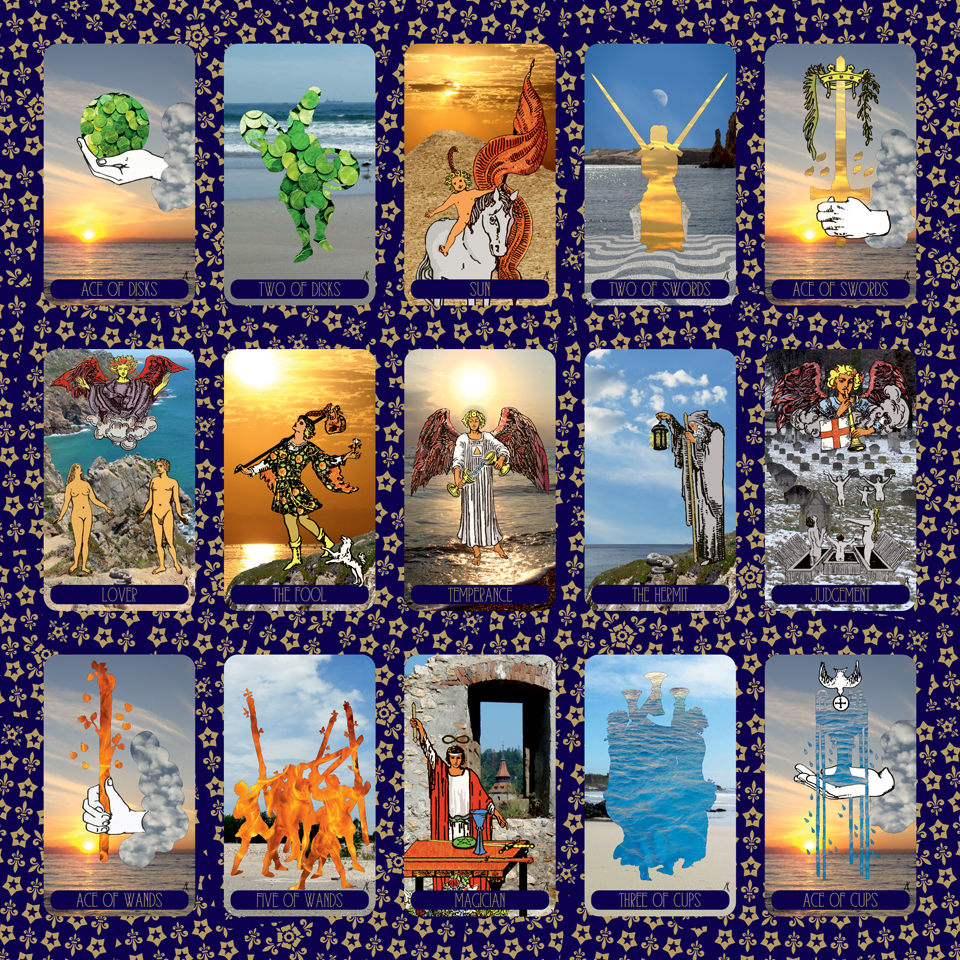
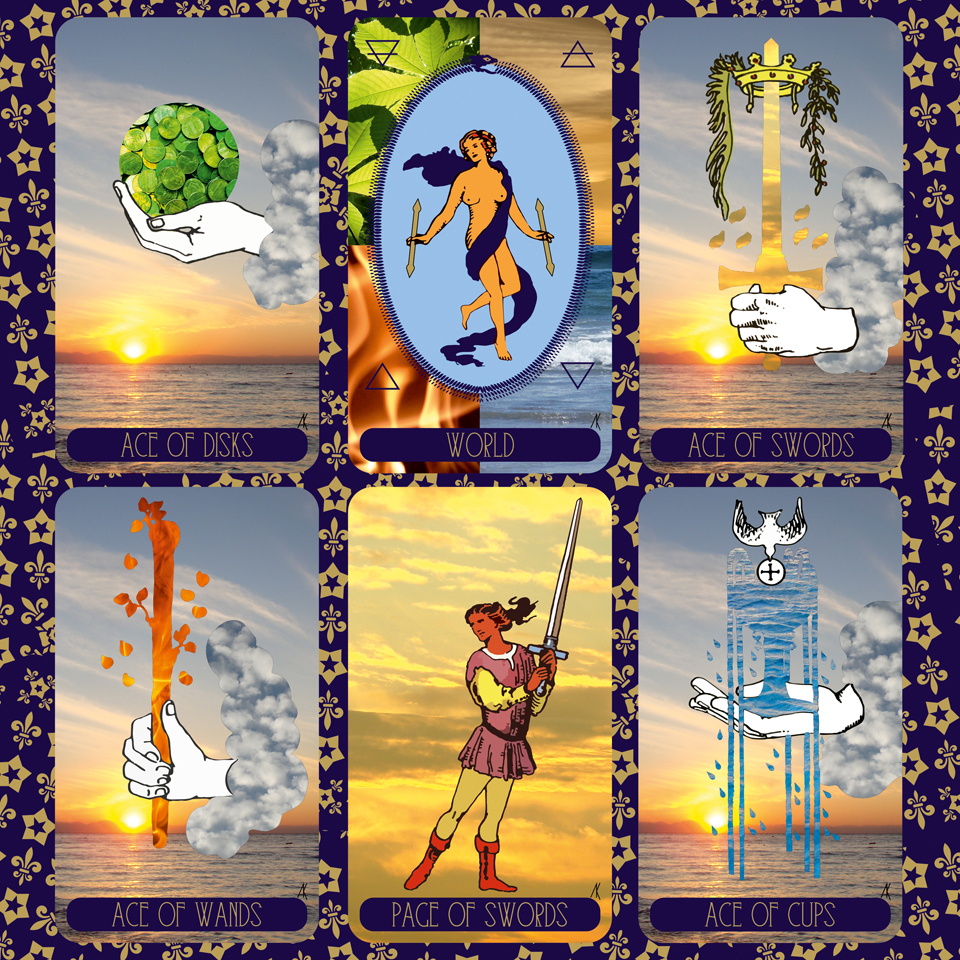
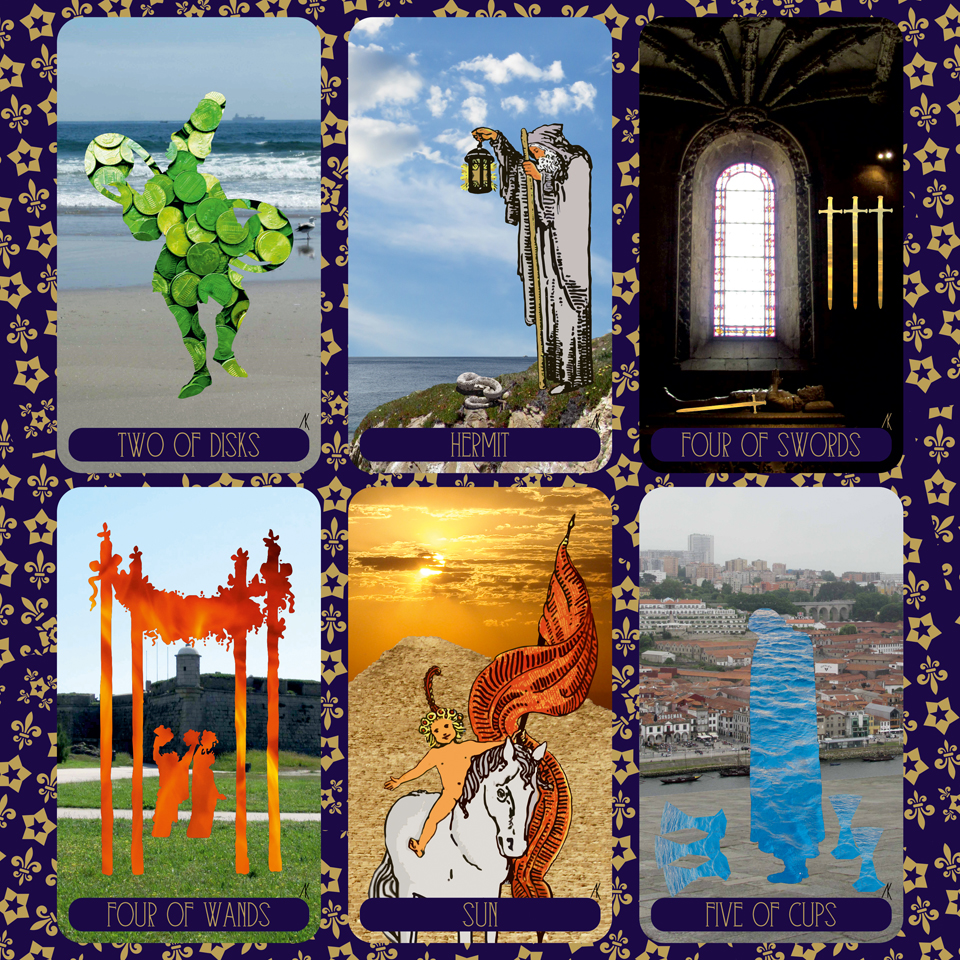
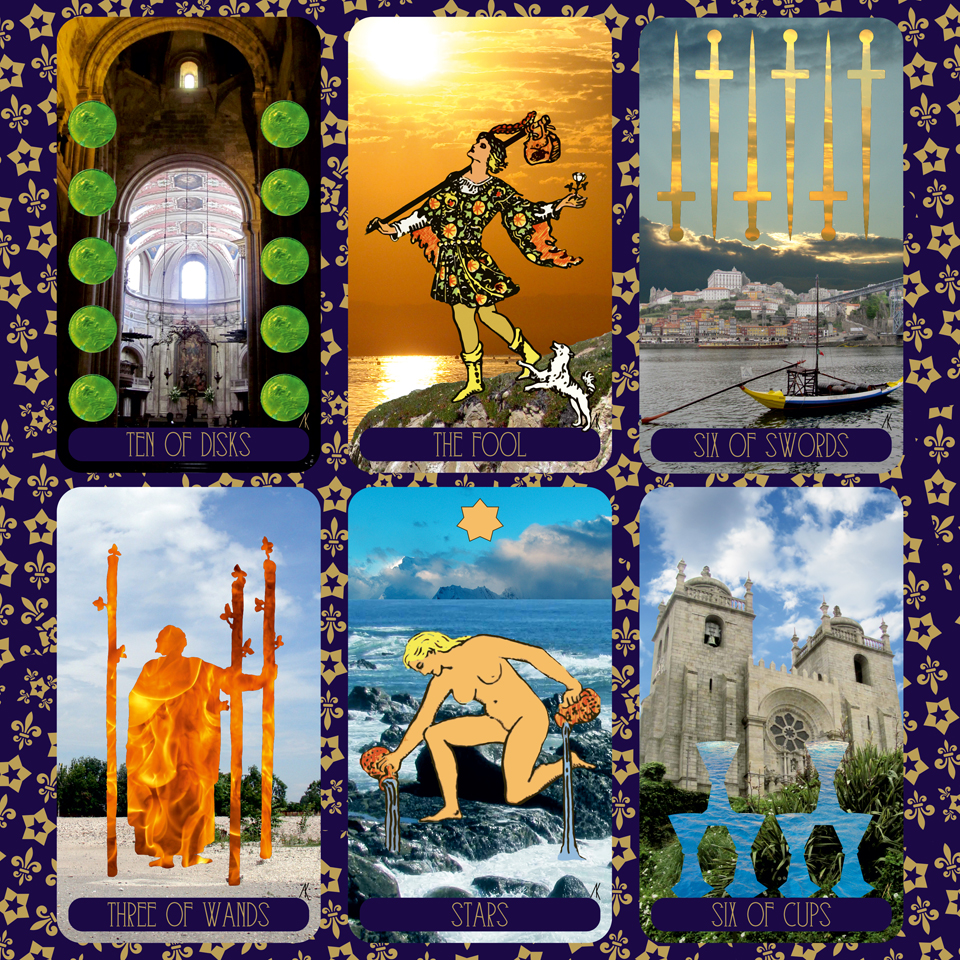
#tarot #tarotart #tarotcards #tarotdeck #traditionaltarot #occulttarot #esoterictarot #magictarot #moderntarot #classictarot #riderwaitesmith #dailytarot #learningtarot #divination #fortunetelling #cartomancy #cardreading #astrology #numerology #alchemy #kabbalah #psychology #therapy #thefourthway #sales #promotion #giftideas #xmasgifts #wintersolstice

